Old Town was in the frame in the early days of photography
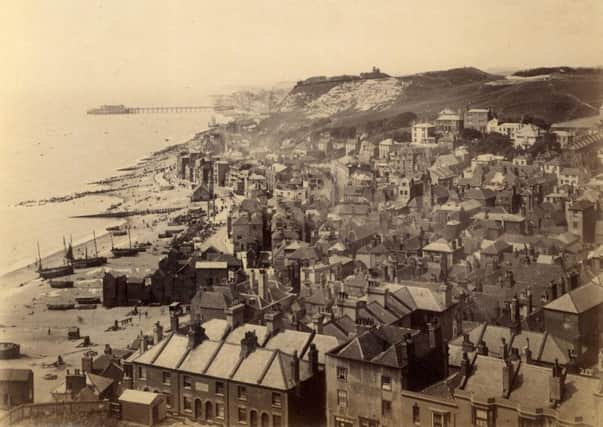

He writes. Photography, the recording of images, was invented following experiments begun in early 1834, by William Henry Fox Talbot (1800–1877), a British scientist, and photography pioneer who invented the salted paper and calotype processes that paved the way for the photographic advances of the later 19th and 20th centuries.
He also held a patent which affected the early development of commercial photography in Britain and, as a noted photographer, he contributed to the development of photography as an artistic medium.
Advertisement
Hide AdAdvertisement
Hide AdTalbot’s invention was a process for creating reasonably light-fast and permanent photographs and his early “salted paper” or “photogenic drawing” process used good quality writing paper bathed in a weak solution of ordinary table salt, dried, then brushed on one side with a strong solution of silver nitrate to create a coating of very light-sensitive silver chloride that darkened where it was exposed to light. The exposure continued until the desired degree of darkening had been produced (which could require an exposure of an hour or two) after which the results were chemically stabilized so that they would no longer react to light and could be used to print the negative image produced in the camera onto another sheet of salted paper, creating a positive image.
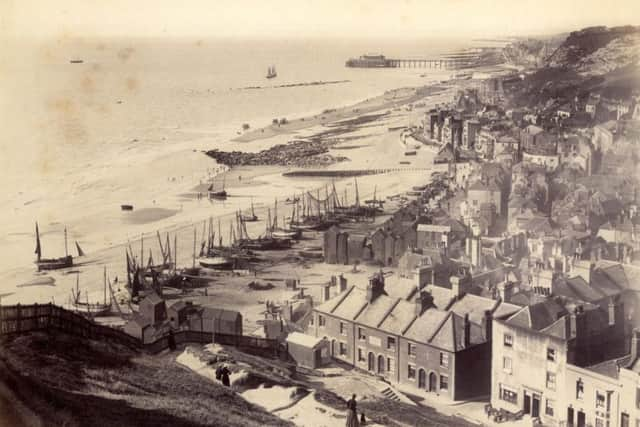

In February 1841, Talbot obtained an English patent for his developed-out calotype process (The term comes from the Greek kalos, “beautiful” and tupos, “impression”) where an extremely faint or completely invisible latent image in the camera was protected from further exposure to daylight and then removed from the camera and this latent image chemically developed into a fully visible image. In 1851 Frederick Scott Archer publicised the wet collodion process, which used glass instead of paper for making the camera negative and this overcame the lack of detail often criticised in prints made from calotype negatives and sharp images could at last be produced as paper prints.
The collodion process soon replaced the calotype in commercial use but required the photographic material to be coated, sensitized, exposed and developed within the span of about fifteen minutes, necessitating a portable darkroom for use in the field.
The albumen process for printing out the photograph required an unique kind of chemically treated paper and one of the distinct characteristics of 19th century albumen prints is that they are on super thin paper that had to be mounted by pasting on to a heavier card backing. The name ‘albumen’ derives from the egg white that was used to bind the developing chemicals to the paper. The combination of the glass negative and the positive paper to print on led to the popular availability of commercial photographs from the mid 19th century onward and the rise of professional photographers.
Advertisement
Hide AdAdvertisement
Hide AdThe population of Hastings was rising from 14,016 in 1851, 25,929 in 1861, 37,842 in 1871 and 49,755 in 1881 with a consequent rise in the number of seasonal visitors providing a ready market for souvenir images in the days before postcards and the albumen prints, usually from uncredited photographers were frequently supplied unmounted so that the customer could paste them into their own albums, often resulting in creasing and rippling of the image in the hands of an inexperienced collector. This selection of albumen prints from the second half of the 19th century shows the dramatic evolution of the Hastings coastline in the past 140 years and the successful results of foreshore management that has resulted in shingle retention and coastal protection and the burying of the remains of the unsuccessful Elizabethan harbour.
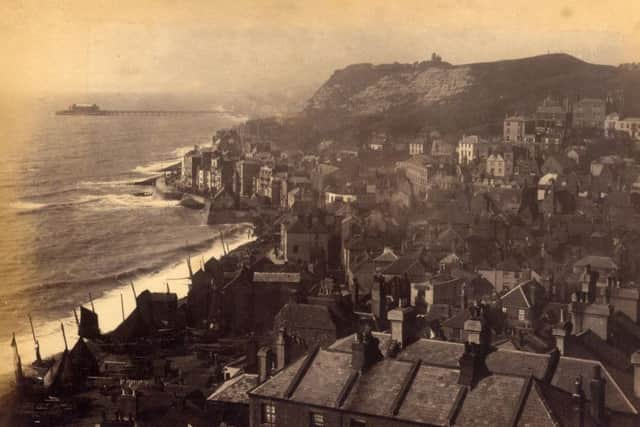

All illustrations throughout this series are from Ion Castro’s own collection and he can make available copies of many of the historic images used in this series. There’s more local history on Ion’s website, www.historichastings.co.uk or contact him - [email protected].
Captions:
1597 Old Town from the Beach.
No. 1597 in a series from an unnamed publisher this image dates from the end of the 19th century – notice no harbour arm (started 1896) and no East Hill Lift, opened 1902. The ‘Pier Rocks’ in the foreground are the remains of the unsuccessful Elizabethan harbour that is now buried under the advancing shingle. The small crowd on the beach on the left may be attending a ‘Dutch Auction’ where the catch is shot out onto the shingle, the buyers and bystanders would gather round and the seller would begin with a high price, rather than a low one, dropping it until someone cried out “I’ll have it!”
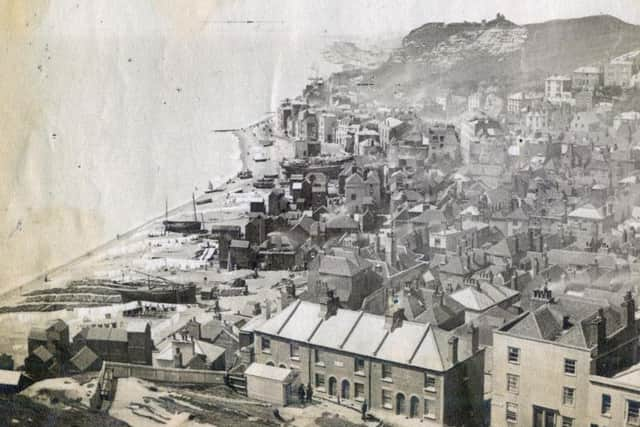

Beach looking west.
The photographer is standing on the rocks of the failed Elizabethan harbour, the stakes that were supposed to the contain the rocks can be seen where the rocks meet the shingle. Above the rocks is the sea wall with small boats up against it. Further west Beach Terrace is in evidence in front of Pelham Crescent. Notice the lads in amongst the rocks, are they relatives of the photographer? The Regency terrace that is now ‘De Luxe Leisure’ is in the centre of the picture.
East Hill Looking West 1.
Advertisement
Hide AdAdvertisement
Hide AdThe top of the cliffs at Rock-a-Nore has always been a popular vantage point and this unknown photographer has taken advantage of it. The image can be dated prior to 1869 because there is no evidence of Hastings Pier where work started that year (the pier opened in 1872) and notice the closeness of the sea to the houses. The white marks on the beach are drying washing.
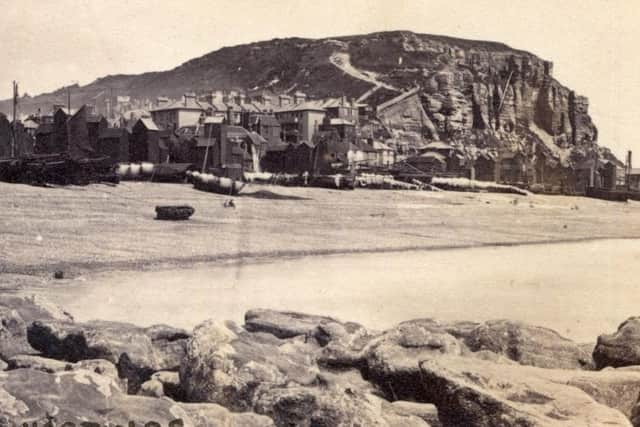

East Hill Looking West 2.
Photographed around 1865 from the East Hill, the sign on the houses in the centre of the image, on the southern end of Tackleway reads “HCIS Lindsell Cottages 1862” HCIS was the charitable ‘Hastings Cottage Improvement Society’. Notice the washing drying on the beach, fishermen’s wives took in washing to supplement the family income and dried it on the beach and no sign of Hastings Pier started in 1869.
East Hill Looking West and Piers.
An image from the end of the 19th century, Hastings Pier can be seen as can St Leonards Pier, where work started in 1888 and is just visible in the distance. The lifeboat house, built 1882 and demolished for road-widening in 1959, can be seen just above the centre of the picture
Fishing Boats.
Photographed in the last quarter of the 19th century notice the fishing fleet is drawn up close the houses and work has not started on the harbour, that would happen in 1896 and of course there’s no East Hill Lift. The boat in the centre is the 51RX and Hastings’ iconic net shops can be seen in the distance.
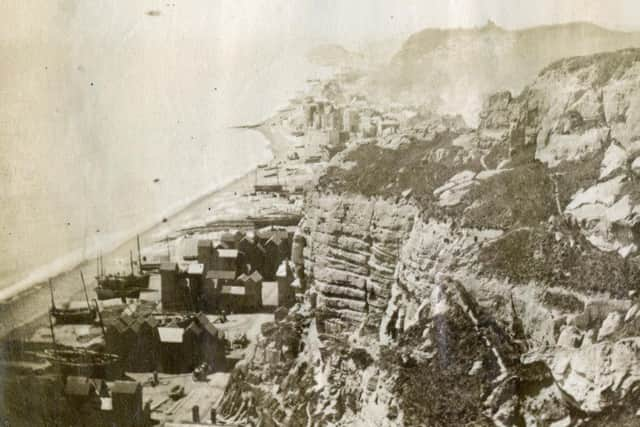

Hastings 1890.
Advertisement
Hide AdAdvertisement
Hide AdThe mount for this image was marked ‘Hastings 1890’ and shows the shoreline with the tide out and washing drying on the beach. In the distance St.Leonards Pier, which opened that year, can just be seen. The Lifeboat House and its tower can be seen centre left.
Hastings.
A low-tide view of the fishermen’s beach from the pier rocks before the harbour was started in 1896. Washing is on lines as well as on the shingle suggesting an influx of visitors.
Old Town Hastings 3329 GWW.
Captioned ‘Old Town Hastings 3329 GWW’ GWW is the publisher and the image from the 1880’s shows the shoreline at high tide, the new lifeboat house built in 1882 can be seen projecting into the waves. Work on St Leonards Pier has not yet been started. The danger to property posed by the waves can clearly been seen.